
We analyzed 50 000 matches with the ruleset Reverse speed. Here we take a closer look at the decks of players that win.
Table of contents
This is the fifth post in our series on Splinterland strategies where we discuss how to deal with different rulesets. You can find our previous posts on other rulesets in the links below:
Strategycorner with Mammuter #1 - Ruleset Super Sneak
Strategycorner with Mammuter #2 - Ruleset Earthquake, and a GRADING SYSTEM for splinters
Strategycorner with Mammuter #3 - Ruleset Noxious Fumes
Strategycorner with Mammuter #4 - How to WIN in MELEE MAYHEM
In this post we cover the rule Reverse Speed. To describe how good a particular monster is for the ruleset, we will look at the difference in card selection between winning and losing teams.
Reverse Speed
 Reverse Speed - Monsters with the lowest Speed attack first and have the highest chance of evading attacks.
Reverse Speed - Monsters with the lowest Speed attack first and have the highest chance of evading attacks.
Speed determines the order of attack between monsters, and the monsters with the highest speed attack first. If the speed of two monsters is equal, magic attack monsters go first, then ranged and lastly melee. In Reverse Speed, the speed scale is reversed, and the slowest monsters go first.
There are quite a few monsters and summoners that can increase or decrease speed. Since speed abilities stack, the speed difference between teams can sometimes become very large. In reverse speed, the maximum speed is one, and hence the difference between teams are generally lower.
Why is speed important?
When a monster hits another monster, a difference of one in speed will yield a chance of dodging. In fact, the dodge chance increases by 10% for each one difference in speed between the monsters. The following table shows how likely a monster with one in speed is to hit a monsters with speed as given.
| Your monsters speed | 1 | 1 | 1 | 1 | 1 | 1 |
|---|---|---|---|---|---|---|
| Opponent's monsters speed | 1 | 2 | 3 | 4 | 5 | 6 |
| Chance that the hit will miss | 0% | 10% | 20% | 30% | 40% | 50% |
For a normal match, this means that Living Lava will only hit Spineback Wolf with half of its attacks.
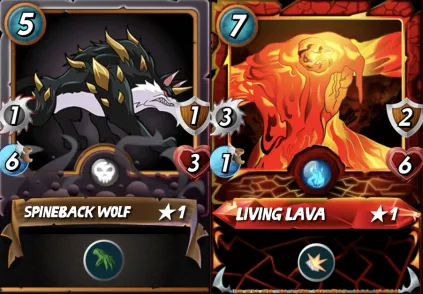
In Reverse Speed, the tables are turned and it the Lava now has the upper hand.
Best Monsters
I know that when I encounter the Reverse Speed ruleset, all my focus shifts towards the speed of the monsters. But does the data support the dominance of low-speed monsters? Here we present the results from 50 000 matches among players rated 1400-2200.
The following figure shows the difference in card selection between winning and losing teams in Reverse speed. A higher blue bar means that the monster is favoured among winning teams. The number above the bars is the average level of the monster when it is played.
Figure 1: Best performing monsters
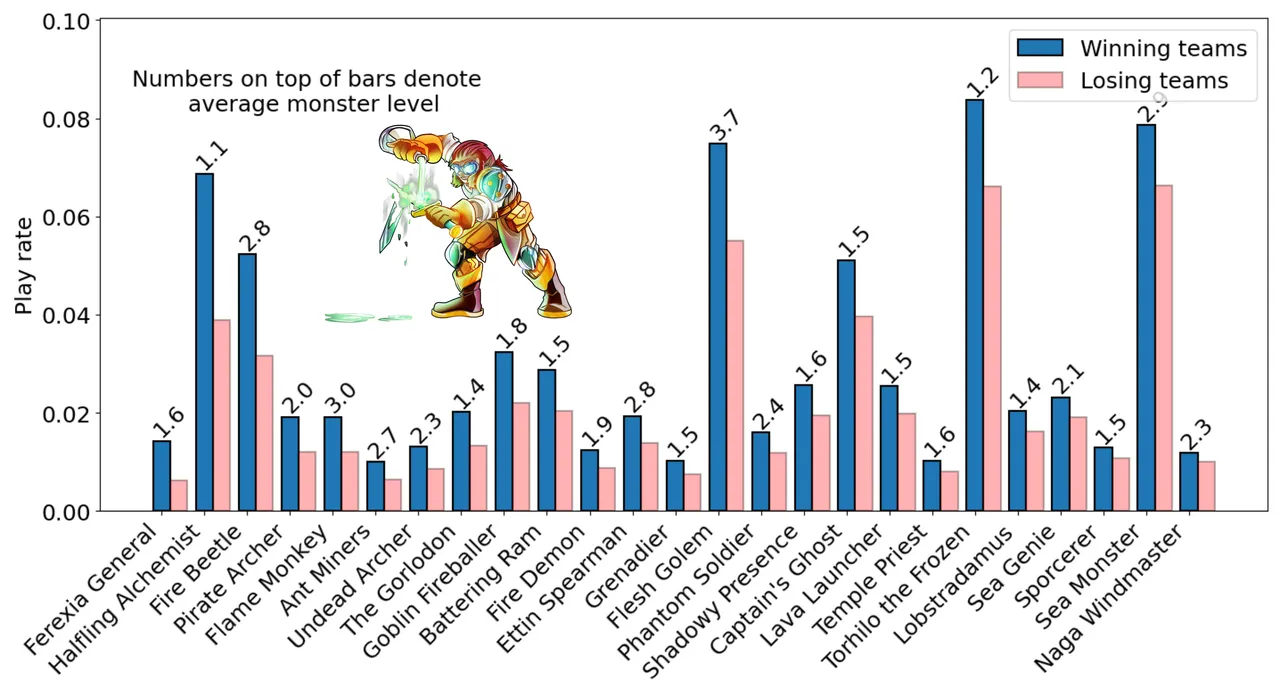
Clearly, many low-speed monsters are sticking out. Halfling alchemist has a speed of one, and can reduce the attack of the frontline monster very quickly in this ruleset. Torhilo the Frozen, Sea Monster, The Gorlodon, Battering Ram, Ettin Spearman are among the cards that do really well. Flesh Golem also performs well. It has three-speed, which is not the fastest in Reverse, but the healing ability of the Flesh Golem makes up for it (note that the average level of Flesh Golem is 3.7 when played in this ruleset, and it acquires healing on lvl three).
The next figure shows the worst-performing monsters.
Figure 2: Worst performing monsters
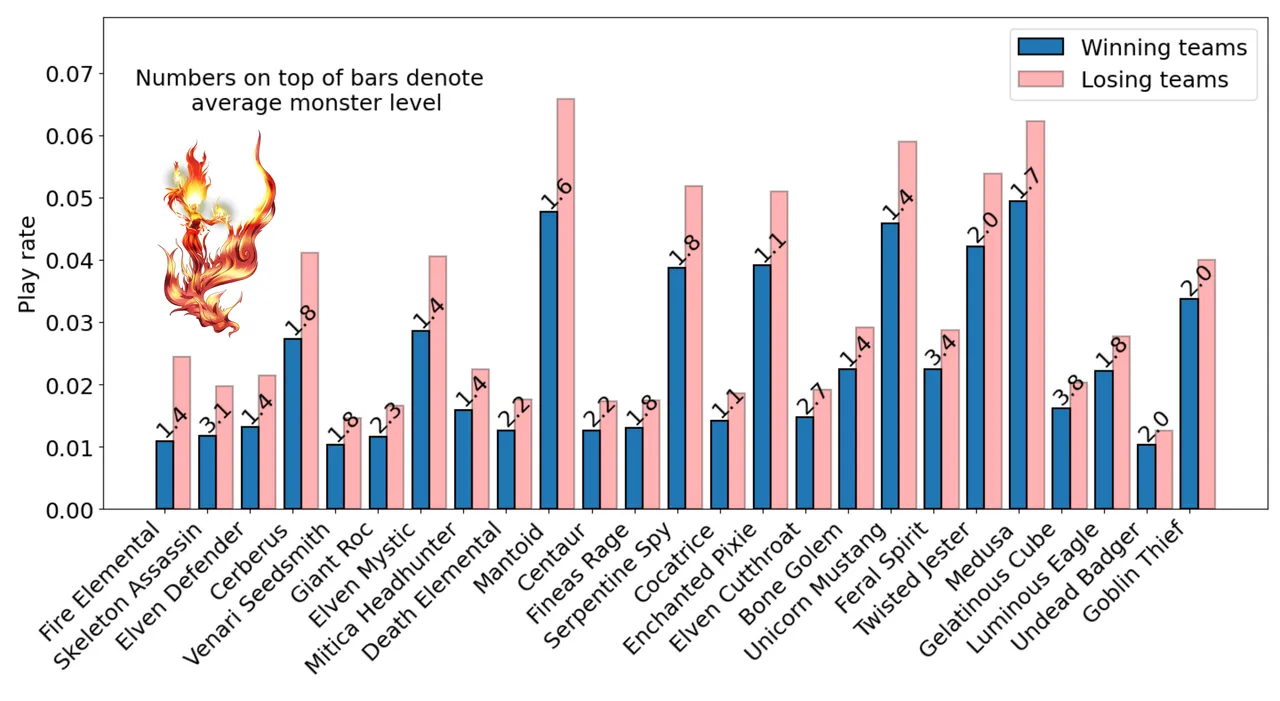
Many of the poor performing monsters above are high-speed cards, which speaks of the detrimental effects Reverse Speed has on them. Elven Cutthroat, Feral Spirit, and Fineas Rage are normally great cards, but here they perform poorly. Bone Golem is also represented, which is a bit surprising since the card has only 1 speed. But from the average level of 1.4, we can conclude that it is normally selected by lower-rated players, which a probably less experienced players.
Next, we look at the deck of the best performing summoner Yodin, and two other commonly used summoners Bortus and Zintar Mortalis.
The decks of Yodin, Zintar Mortalis and Bortus
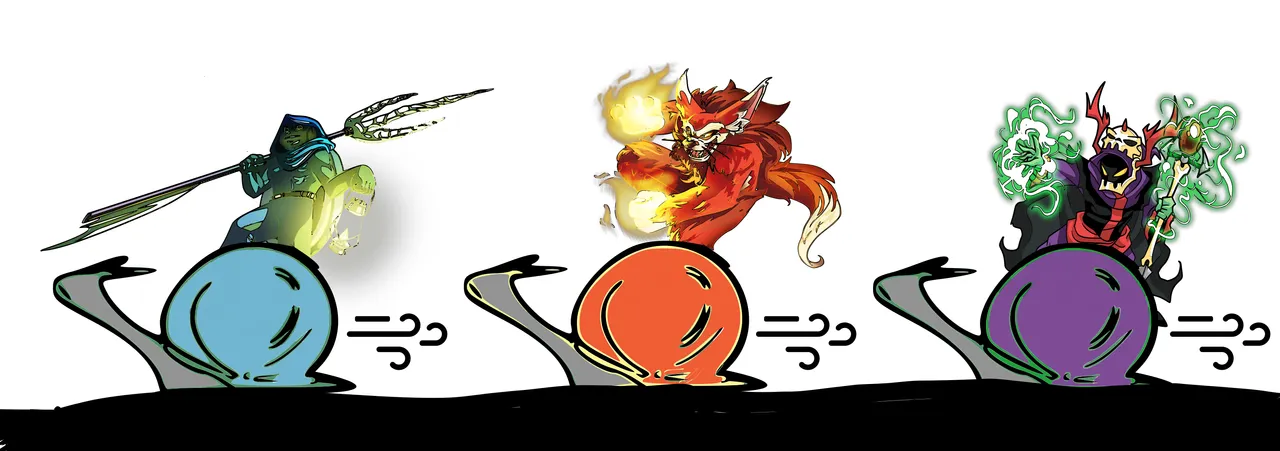
Yodin Zaku
Figure 3: Yodin's cards
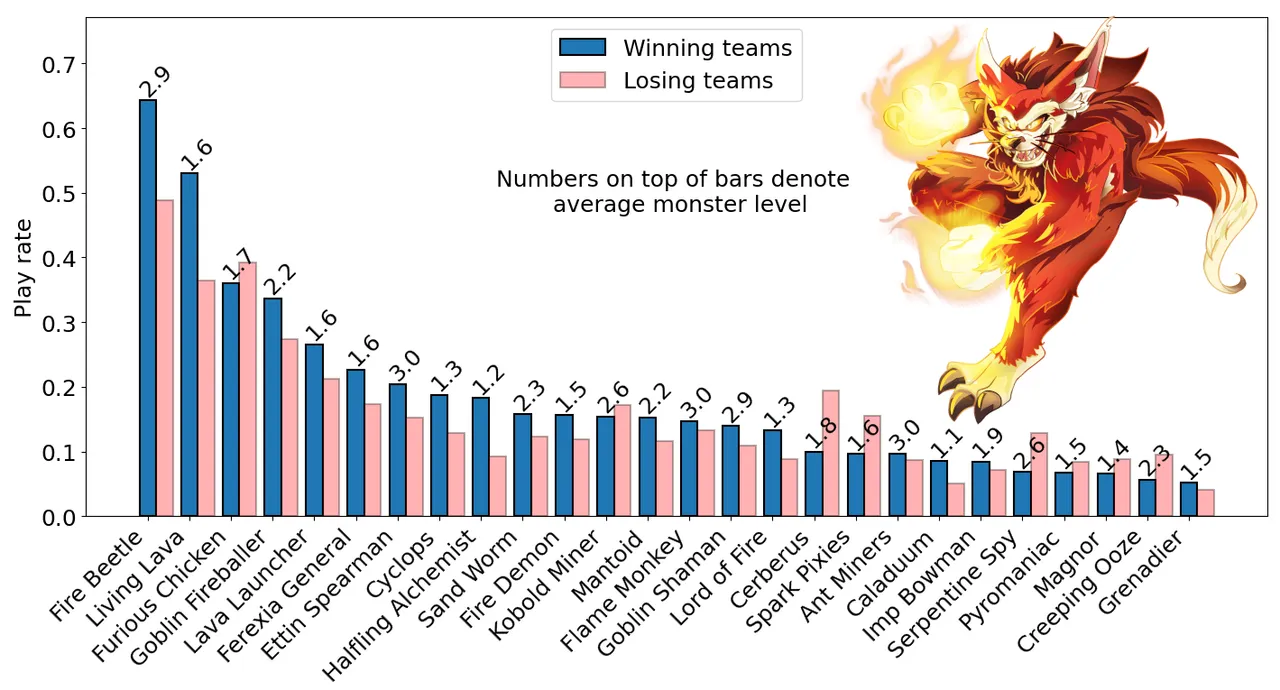
Yodin Zaku is the king of Reverse Speed. This is not surprising, since speed is in fact one of Yodin's weaknesses. His favorite cards are quite slow: Fire Beetle, Feraxia General, Lava Launcher etc. are all cards that do not gain a lot of speed with levels. In Reverse Speed, Yodin can play his most powerful monsters with little concern that they will miss their hits. The data show that Fire Beetle and Living Lava are his core cards in Reverse Speed. They have massive play rates and great win rates. Cyclops is noteworthy, as it is a free-to-play neutral card with a good win rate. There are also many other good options for Yodin.
Cards to avoid are the fire cards that do in fact have higher speed. Cerberus, Spark Pixies and Serpentine Spy do quite poorly. Avoid these, and you should do fine with Yodin.
Bortus
Figure 4: Bortus's cards
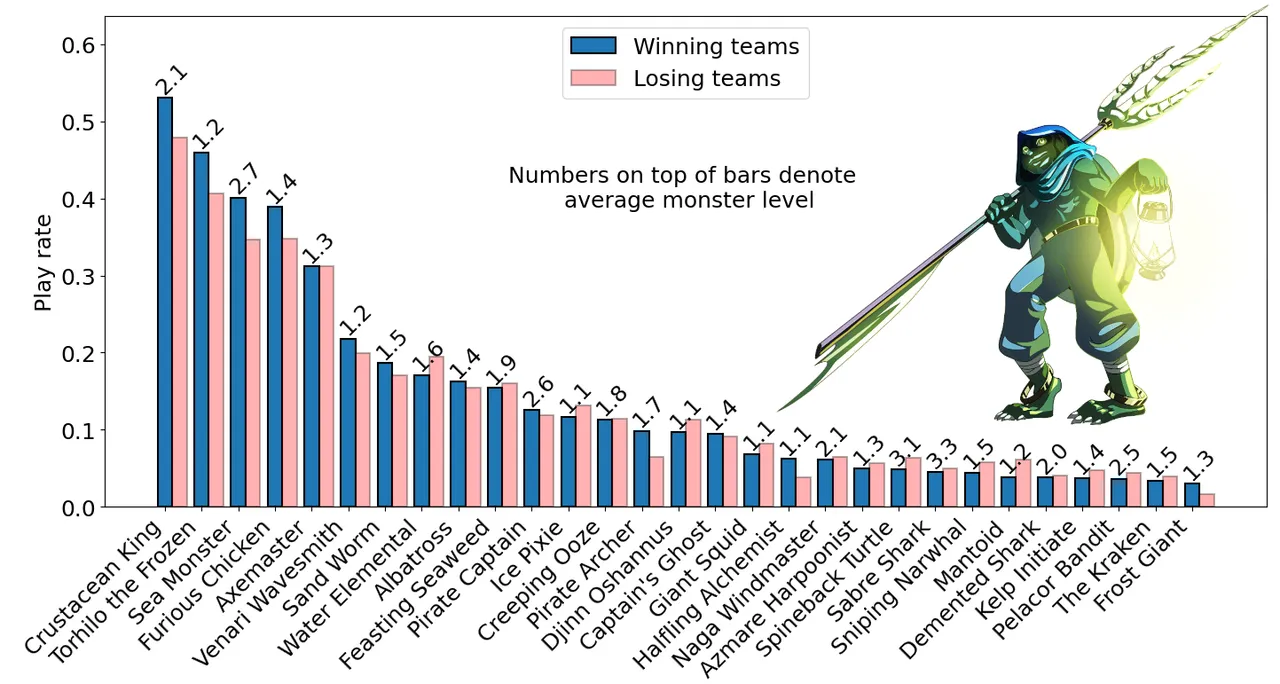
Bortus also does pretty well in reverse speed. There are two cards that make the core options for Bortus' team. Either Torhilo the Frozen, if you think you might face magic damage, or Sea Monster to heal back up after soaking up the damage. Both are typically paired with Crustacean King to keep them alive longer. Torhilo the Frozen has 1 speed at all levels, making him perfect for Reverse Speed. Sea Monster does gain some speed with levels, but is never a particularly fast card, so it should generally do well in Reverse Speed. Among the rest of the cards Bortus plays, most are pretty average, who lose as much as they win. The exceptions are Venari Wavesmith, Sand Worm, Pirate Captain and Pirate Archer. Frost Giant should also be mentioned as an alternative for Bortus, but it is pretty rare, and therefore doesn't make in onto the played cards list.
Cards to stay away from with Bortus in Reverse Speed are Mantoid, Spineback Turtle, Djinn Oshannus, Giant Squid, Sniping Narval and Water Elemental.
Zintar Mortalis
Figure 5: Zintar's cards
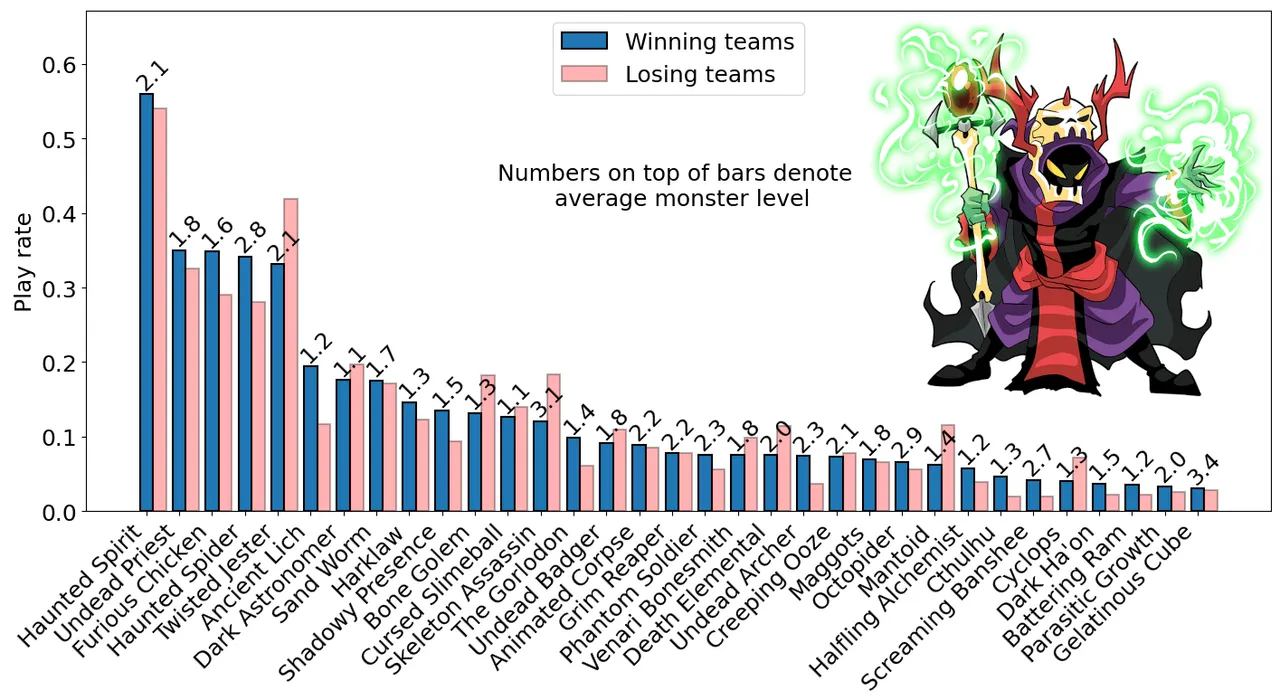
Zintar loves Haunted Spirit, and with good reason. The card is very strong and can be used in most situations with pretty good chances. The same goes for Undead Priest, and both these cards are also good for Reverse Speed. Haunted Spider, on the other hand, is not a safe pick for all situations, but is very good in Reverse Speed. The legendary cards Ancient Lich, Harklaw, and Chtulu will greatly boost your winning chances, and the same goes for The Gorlodon. Undead Archer is also a card that does well, likely due to the cheap access to Affliction to counter healing setups. Finally, Shadowy Presence is a great option in Reverse Speed. At one mana and 1 speed, there is very little reason not to include it, unless you are playing a very high mana battle. In Reverse Speed, this card can save your other cards for a bunch of hits since it has a good chance of dodging any incoming damage. We might consider it the Extra-Furious Chicken in this mode.
Stay away from Mantoid and Cyclops, Skeleton Assasin and Death Elemental. In fact, most of Zintar's free-to-play cards are pretty bad for Reverse Speed, other than those already discussed above. Make sure that you have rented some of the stronger Death Cards if you decide to go with Zintar in Reverse Speed.
Great cards for Reverse Speed
Neutral cards

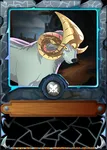



Great cards for Yodin



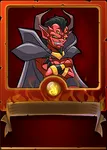







Great cards for Bortus









Great cards for Zintar Mortalis

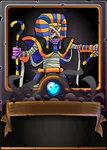





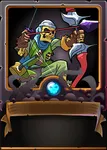


Bad cards for Reverse Speed
The lists are longer, but here we provide a few examples of poor performing cards.
Neutral cards


Bad cards for Yodin


Bad cards for Bortus


Bad cards for Zintar Mortalis

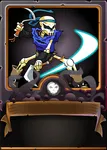
Closing remarks
We hope this post gives you some new ideas on what to do and what not to do in Reverse Speed.
If you want more data-driven analyses on how to win in different leagues and in different rulesets, follow us @mammuter & @kalkulus. Also, check out our previous posts at:
How to WIN in GOLD 3 - Win rate and play rate statistics #6
How to counter YODIN ZAKU - Yodin match strategy for each of the f2p summoners.
How to WIN in SILVER 1 - Win rate and play rate statistics #5
How to WIN in SILVER 2 - Win rate and play rate statistics #4
How to WIN in SILVER 3 - Win rate and play rate statistics #3: Silver 3
How to WIN in BRONZE - Win rate and play rate statistics #2: Bronze 2 and 1
If you want to join Splinterlands and at the same time support our work, use my promo link:
Join Splinterlands
Until next time,

